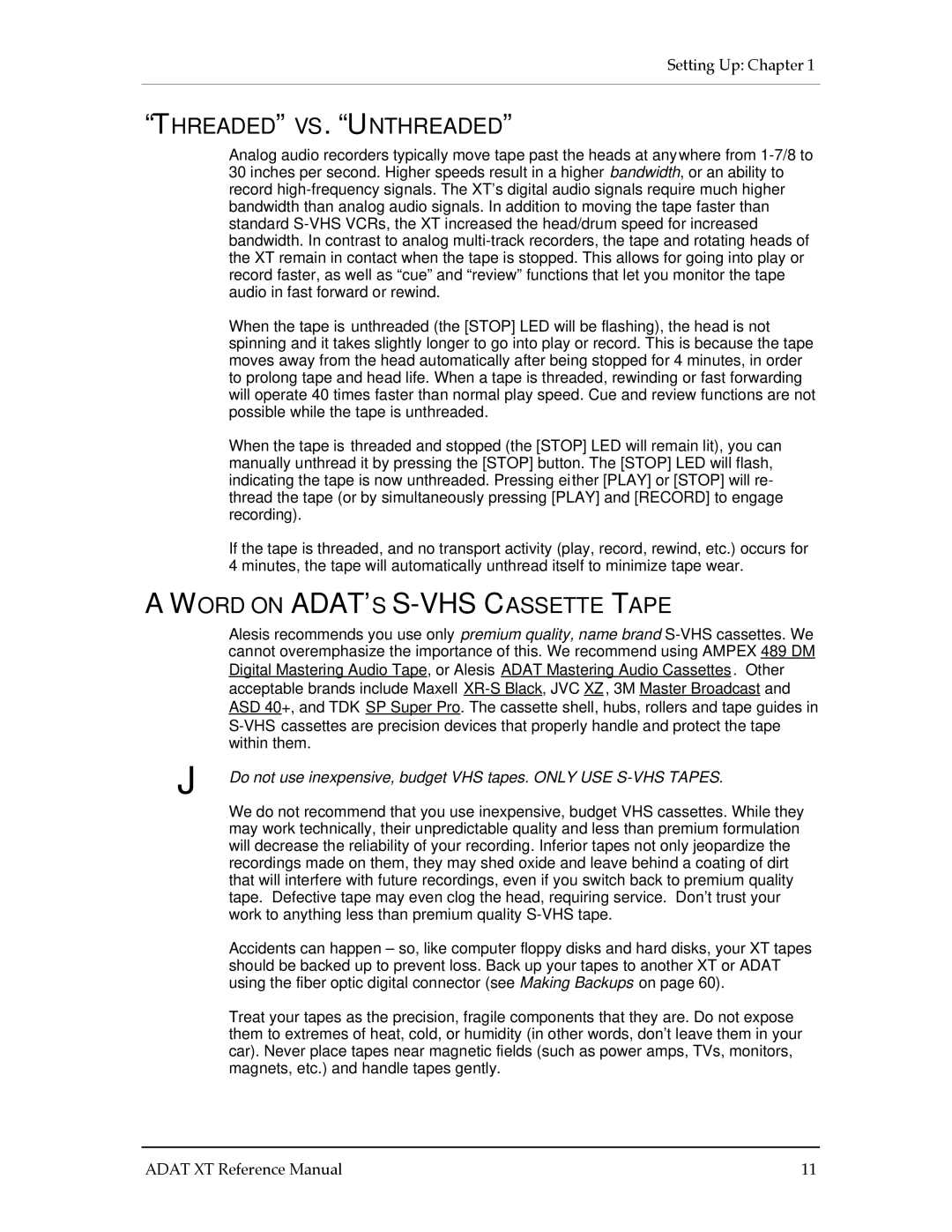
Setting Up: Chapter 1
“THREADED” VS. “UNTHREADED”
Analog audio recorders typically move tape past the heads at anywhere from
When the tape is unthreaded (the [STOP] LED will be flashing), the head is not spinning and it takes slightly longer to go into play or record. This is because the tape moves away from the head automatically after being stopped for 4 minutes, in order to prolong tape and head life. When a tape is threaded, rewinding or fast forwarding will operate 40 times faster than normal play speed. Cue and review functions are not possible while the tape is unthreaded.
When the tape is threaded and stopped (the [STOP] LED will remain lit), you can manually unthread it by pressing the [STOP] button. The [STOP] LED will flash, indicating the tape is now unthreaded. Pressing either [PLAY] or [STOP] will re- thread the tape (or by simultaneously pressing [PLAY] and [RECORD] to engage recording).
If the tape is threaded, and no transport activity (play, record, rewind, etc.) occurs for 4 minutes, the tape will automatically unthread itself to minimize tape wear.
AWORD ON ADAT’S S-VHS CASSETTE TAPE
| Alesis recommends you use only premium quality, name brand |
| cannot overemphasize the importance of this. We recommend using AMPEX 489 DM |
| Digital Mastering Audio Tape, or Alesis ADAT Mastering Audio Cassettes . Other |
| acceptable brands include Maxell |
| ASD 40+, and TDK SP Super Pro. The cassette shell, hubs, rollers and tape guides in |
| |
| within them. |
J | Do not use inexpensive, budget VHS tapes. ONLY USE |
| We do not recommend that you use inexpensive, budget VHS cassettes. While they |
| may work technically, their unpredictable quality and less than premium formulation |
| will decrease the reliability of your recording. Inferior tapes not only jeopardize the |
| recordings made on them, they may shed oxide and leave behind a coating of dirt |
| that will interfere with future recordings, even if you switch back to premium quality |
| tape. Defective tape may even clog the head, requiring service. Don’t trust your |
| work to anything less than premium quality |
| Accidents can happen – so, like computer floppy disks and hard disks, your XT tapes |
| should be backed up to prevent loss. Back up your tapes to another XT or ADAT |
| using the fiber optic digital connector (see Making Backups on page 60). |
| Treat your tapes as the precision, fragile components that they are. Do not expose |
| them to extremes of heat, cold, or humidity (in other words, don’t leave them in your |
| car). Never place tapes near magnetic fields (such as power amps, TVs, monitors, |
| magnets, etc.) and handle tapes gently. |
ADAT XT Reference Manual | 11 |
